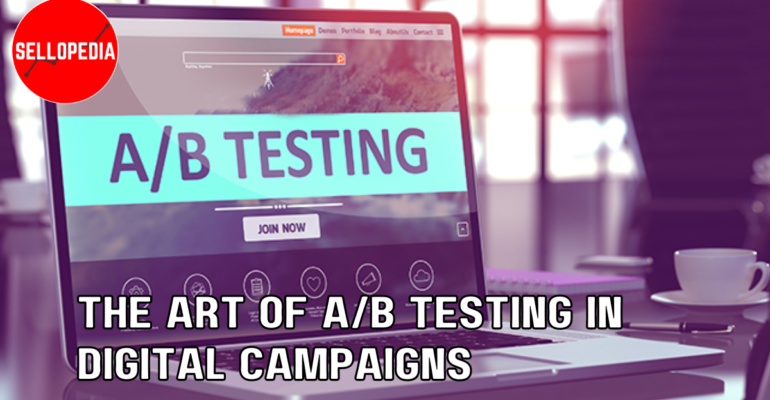No products in the cart.

The Art of A/B Testing in Digital Campaigns
Introduction:
A/B testing, also known as split testing, is a crucial component of any successful digital marketing strategy. It allows marketers to experiment with different elements of a campaign to determine what resonates best with their audience. By making data-driven decisions, A/B testing empowers you to optimize your digital campaigns, improve conversion rates, and boost overall performance. In this blog, we’ll delve into the art of A/B testing, exploring its significance, best practices, and how you can leverage it to enhance your digital campaigns.
Understanding A/B Testing:
Before we dive into the nitty-gritty, let’s clarify what A/B testing is and why it’s essential. A/B testing involves creating two or more variations of a webpage, email, ad, or other digital assets to see which one performs better. It helps you answer questions like, “Which headline gets more clicks?” or “Which call-to-action button generates higher conversions?” The goal is to make informed changes that lead to improved results.

The Significance of A/B Testing:
- Data-Driven Decision Making: A/B testing takes the guesswork out of marketing. It allows you to base your decisions on concrete data, rather than gut feelings or assumptions.
- Continuous Improvement: Digital marketing is an ever-evolving field. A/B testing helps you adapt and refine your strategies to stay ahead of the curve.
- Cost-Efficiency: Instead of making large-scale changes to your campaigns, A/B testing lets you make incremental improvements. This approach can save time and resources.

Best Practices for A/B Testing:
- Set Clear Goals: Before you start a test, define what you want to achieve. Whether it’s higher click-through rates, increased conversions, or better engagement, having clear objectives is crucial.
- Test One Variable at a Time: To pinpoint what’s driving the change in performance, it’s best to test a single variable at a time. For example, if you’re testing an email campaign, try changing the subject line first, then the content, and so on.
- Segment Your Audience: Different audience segments may respond differently to your variations. Segment your audience and tailor your A/B tests accordingly.
- Statistical Significance: Ensure your tests run for a sufficient period to collect a statistically significant amount of data. This prevents premature conclusions based on limited results.
- Consistent Testing: A/B testing is an ongoing process. Regularly test and optimize to keep your campaigns fresh and effective.

Examples of Successful A/B Tests:
- Email Subject Lines: A famous A/B test involved President Obama’s campaign in 2008. They tested two subject lines, “Hey” and “Join me for dinner?” The latter outperformed, raising millions of dollars.
- Button Colors: A simple A/B test for a call-to-action button showed that changing the color from green to red resulted in a 21% increase in conversions.
- Landing Page Layout: Altering the layout of a landing page to emphasize benefits over features increased conversions by 21.7%.

Conclusion:
The art of A/B testing in digital campaigns is all about continuous improvement. By following best practices and consistently testing, you can refine your digital marketing strategies, drive better results, and adapt to the changing landscape of the online world. Data-driven decision making is at the heart of successful digital marketing, and A/B testing is a powerful tool that should be in every marketer’s arsenal. So, start testing, optimizing, and watch your digital campaigns flourish!



etherization
etherization xyandanxvurulmus.lUDqyyk3aKv8